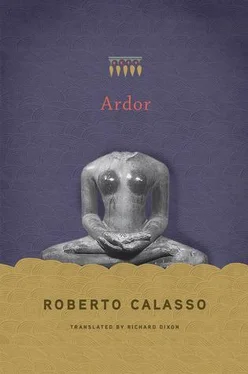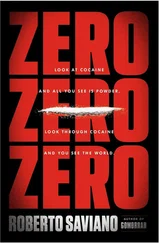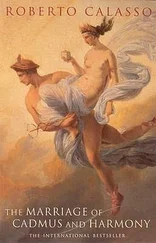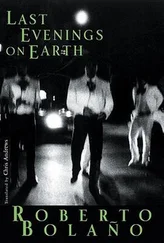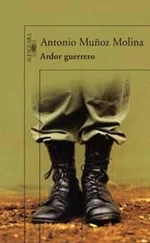Study of the Veda, known as svādhyāya or “inner recitation,” had to be done beyond the confines of the village, to the east or north, where the roofs were out of sight. It was the first indication of a process by which the simple acquisition of knowledge would get gradually more distant from society and unshackled by it. But study could also be carried out in other ways, even in bed: “And, in truth, if he studies his lesson, even stretched out on a soft bed, oiled, adorned and completely fulfilled, he is burned by tapas up to the tips of his fingernails: and so the daily lesson must be studied.” Here we see a figure we thought was modern: the reader, described much as the young Proust might have been described, given over to his journées de lecture. Once again we can see Vedic open-mindedness: to practice tapas we don’t have to cross our legs or subject ourselves to those “mortifications” that some regard as the very meaning of the word tapas. No, even luxe, calme et volupté may help — or at least not hinder. It is enough that the fervor of the mind runs without respite, and burns “up to the tips of the fingernails.”
He who knew the taut thread on which all creatures are woven, he who knew the thread of the thread, would know the great Exegesis.
— Atharvaveda 10.8.37 (trans. L. Renou, 1938)
He who knows the taut thread on which these creatures are woven, he who knows the thread of the thread, knows the great essence of brahman.
— Atharvaveda 10.8.37 (trans. L. Renou, 1956)

The Brāhmaṇas are the part of the Veda most neglected by scholars and most ignored by readers. In the second volume of Dandekar’s Vedic Bibliography , the list of writings on the Brāhmaṇas fills eight pages, while thirty are taken up by the Upaniṣads and twenty-eight by the Ṛgveda. We can guess that not so many scholars, and even fewer readers, have taken any interest in them. And we might wonder why.
A first reason is to do with form, literary genre. The Ṛgveda , after all, can also be read as the most magnificent — and also most persuasive — example of Symbolist poetry, while the Upaniṣads, as Schopenhauer quickly recognized, can be read as outstanding metaphysical texts. But the Brāhmaṇas were neither poetry nor philosophy (only Deussen dared to put them at the beginning of his universal history of philosophy, but his example has not been followed). The Brāhmaṇas are continually laden with gesture: “He [the officiant] does x and y. ” This is the phrase that most often appears, each time prompting the thought: why does “he” do x and not z ? The underlying assumption is that supreme importance is to be given to the liturgical gesture. And that ritual is given preeminence over every other form of thought, as if ritual were the immediate way by which thought itself becomes manifest. This, though, was exactly what the West wanted to shake off — starting with the Greeks and then through the whole of Christian tradition — like superstitious ballast. Liturgical reforms in the Catholic Church, over the centuries, mark a progressive, ruthless reduction in the range of ritual actions, and words accompanying these actions, up to the poor state of things in the wake of the Second Vatican Council. As for the Reformation, more than arguing particular points of theology, it urged a general rejection of the fripperies of worship. And yet, the heart of Christian doctrine is sacramental, linked to gestures that cannot be replaced by words. Hymns of thanksgiving, however lavish, can never substitute the gesture of the priest who breaks the bread. The sacramental act is the greatest obstacle for anyone wishing to adopt the regime of substitution. For it is an irreplaceable gesture, and a gesture that has immediate effect on the invisible. But if the invisible is to be discarded, then its intermediary must also be eliminated.
* * *
Witzel once observed, in passing, that the Brāhmaṇas are “one of the oldest examples of Indo-European prose.” An invaluable comment, which very few seem to have given any thought to. In fact, if it is true that the Brāhmaṇas “are still regarded as incomprehensible and tedious by the very scholars who study them,” then why take any interest in their form? And yet prose — this varied, flexible, prehensile form, capable of stretching to every level, from manuals on horse riding or hydraulics up to Lautréamont, this form that has become normality itself, so normal as to become transparent, to the point of being barely noticed — made its appearance on Indian soil through this unattractive and often incomprehensible literary genre. The Brāhmaṇas are not thought (or at least: they are not what people today are accustomed to consider as thought); and they are not stories (or at least: they are a series of fragmented and continually interrupted stories). Rather, they give instructions above all about ceremonies whose inner meaning, already obscure, often becomes even more obscure due to the explanations the Brāhmaṇas seek to provide. History has taken enormous trouble to chemically separate these elements, associating them with certain injunctions: thought cannot tell a story, a story cannot be a way of thinking, ritual is an obsolete activity that we can do without. To understand just how deeply these convictions are embedded in the mind, we need only listen to ordinary language. If something is described as a “myth,” it is usually regarded as a baseless story; if something is described as a “ritual” act, it generally means it is a hollow and by now ineffective practice. This is diametrically opposed to the Brāhmaṇas, where “myth” is the very fabric of stories that have meaning, an everlasting meaning, and “ritual” is action in its most effective form. If there is such a misunderstanding — and it couldn’t be greater — over the two words that are the foundation of story and gesture, it is no wonder if the people of modern times have developed such an aversion to this literary genre — more antiquated, jumbled, abstruse than any other — that is the Brāhmaṇas. Their first emergence is usually dated, at the latest, to the eighth century B.C.E. The dating is contentious, as it always is in India. But certainly earlier than those Greek sages of whom we know. Thales, the first of the pre-Socratics in the Diels-Kranz edition, lived between the seventh and sixth centuries. Moreover, a text like the Śatapatha Brāhmaṇa is so subtly arranged in its form as to suggest that it was elaborated over a long period. The Indian texts therefore clearly predate the earliest Greek speculation. But the subject matter is very similar— phýsis , the manifestation of that which is. It is a question of giving names to phýsis : in Greece it can take the form of poetry (Parmenides, Empedocles) or statements (Anaximander, Heraclitus). In India, it remains bound up with ritual, with gesture, even in the two longest and oldest Upaniṣads, the Chāndogya and the Bṛhadāraṇyaka. And, above all, the very form of the Upaniṣads — texts that were to be found at the end of a Brāhmaṇa — presupposes all the scrupulous, taxing, dauntless murmur of reasoning that precedes them.
The Śatapatha Brāhmaṇa belongs to the White Yajur Veda, a branch of the Veda devoted to the yajus , to the “formulas” recited by the adhvaryu during sacrifices. And the composition is painstaking, meticulous, always in danger of failing to keep a hold on the enormity of the material, all relating to the nature of the adhvaryu , this priest who works unceasingly and using every means — gestures, manual operations, words. While the other officiants spend their time chanting or watching in silence, the adhvaryu acts and makes the ceremony go on. He is its whirring engine.
Читать дальше
